Healing In South America
20sthanks to Kay
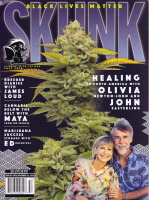
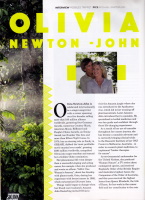
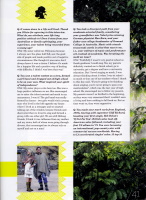
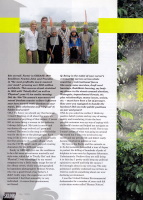
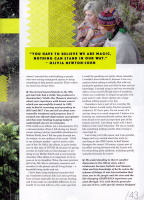
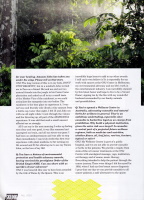
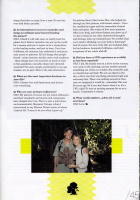
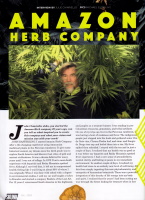
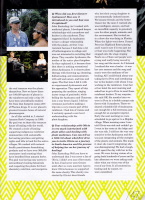
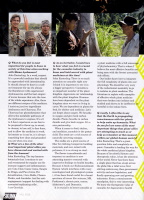
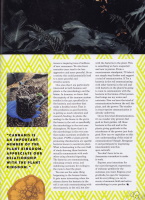
Olivia Newton-John is celebrated internationally as a singer-songwriter with a career spanning over five decades selling more that 100 million albums worldwide, garnering four Grammy Awards, numerous Country Music, American Music, Billboard and People’s Choice Awards, an Emmy Award, ten Number One hits and more than fifteen T0p10 tunes. In 1978, her co-starring role as Sandy in GREASE, dubbed the most profitable movie musical ever made, grossing $395 million worldwide, catapulted Olivia into super-stardom and earned her a Golden Globe nomination.
Her phenomenal life went deeper than a successful singing and acting career, for example when she produced and wrote an album, GAIA: One Woman’s Journey, about her kinship with planet earth, Gaia, during her experience with breast cancer in 1992, which metastasized 20 years later. Things really began to change when her friend (now husband), Amazon John Easterling invited Olivia to visit the Amazon jungle where she was introduced to the Ayahuasca vine, Which led to her Weaning off pharmaceuticals. Later, Amazon John introduced her to cannabis. He specialized in herbal medicines and was her guide and confident through these life-changing experiences.
As a result of her use of cannabis throughout her cancer journey, she has become a cannabis advocate and is currently bringing clinical trials to the Research Institute at her ONJ Center in Melbourne, Australia - in order to research plant medicines, to implement kinder therapies for cancer.
As environmental ambassador for the United Nations, she produced Human Nature, a TV series about endangered species, and received England’s Order of the British Empire and Australia’s highest honor, the Companion of the Order of Australia, and this year received the highest honor from Queen Elizabeth, the title of Dame, for her Work in the cancer field and her contribution to the arts.
Q: It comes down to a life well lived. Thank you Olivia for agreeing to this interview. What do you attribute your life long positive attitude to? Does it stem from your Australian or family upbringing, your experience, your talent being rewarded from a young age?
ONJ: My sister called me Pollyanna because I always saw the glass half full, saw the good side of people and made positive out of negative circumstances. She thought it was naive but I always knew it was a choice. I believe it’s made for a happier life and a positive way of dealing with difficulty. I think I was born that way!
Q: You won a talent contest as a teen, formed a girl band and dropped out of high school to be on your own. What inspired your spirit of independence?
ONJ: My sister plays a role here too. She was a huge positive influence on me. She encouraged me to enter the talent contest and much to my amazement, I won it! The girl band was really formed by chance - two girls would visit a young man who lived in the loft opposite my house where I lived as a teenager and we started talking out of the window, became friends and discovered that we loved to sing and formed a group with one other girl. We are still lifelong friends. I think it was influence from my mother and my sister, both of whom were going through divorce, that encouraged me to always rely on myself and not on a man!
Q: You took a divergent path from your academia-oriented family, considering your grandfather was Nobel prize-winning German physicist Max Born, and your father was college headmaster of Ormond College in Australia. Music with visuals transcends words is what that says to me, i.e. your embrace of music and performance art, instead of academia. Was breaking the mold an issue?
ONJ: Truthfully I wasn’t very good at school so thank goodness I could sing. Yes, my parents definitely wanted me to finish school, go to university, get a degree and have a university education. But I loved singing so much, I was always thinking about it when I was at school - so much so that one of my teachers whom I thank to this day said, If you’re going to be thinking about singing, you’re never going to pass your matriculation
, which was the last year of high school. He encouraged me to follow my passion. My parents weren’t so thrilled in the beginning, as they were very concerned that I wouldn’t earn a living and have nothing to fall back on. But as time went on, they were supportive.
Q: You made your mark early from England, 1970s, touring with superstar Cliff Richard, boosting your first single, Bob Dylan’s If Not For You. British sales took off American sales followed, including your first US album in ‘73. You were becoming an international, pop-country star with commercial success worldwide. Moving to LA accelerated singles’ sales: 15 top-10 hits overall. Factor in GREASE 1978 headlines: Newton-John and Travolta in the most profitable movie musical ever made
, grossing over $395 million worldwide. This success streak stretched to 1983 with Totally Hot, as well as Physical, your #1 ten weeks running. Did the ‘60s-’70s women’s movement and
sexual freedom counter culture influence your turn toward erotic freedom in your music, from wholesome and ‘virginal’ to bolder and sexier?
ONJ: It’s funny you should say that because I wasn’t thinking at all about the women’s movement or anything of that nature - I never felt an issue being a woman in the industry. I always felt equal. My taste in music and my choice of songs evolved as I grew and evolved. The story in the song is what led the way for the video or the photographs. Each song is like a little mini-movie. I was actually the first person to do a video album, which was the CD Physical, and I enjoyed creating characters for the different songs. Sandy in GREASE gave me the confidence to be a bit more adventurous musically and style wise, which led to Totally Hot and then Physical. I was encouraged by my record company to try a little sexier image for one of the album covers, which was photographed by legendary photographer Helmut Newton, who was a good friend of my father’s. I didn’t really enjoy the experience as it felt unnatural. I feel that sensuality is very individual - it comes from genuineness, not forced.
Q: Being in the midst of your career’s commercial success across whole countries - international forces like wars, mass marches, draft card burnings, Buddhists burning, my body - choice in the streets around abortion, Watergate, impeachment threats, etc. plus relationships, money issues, sexism, etc. -- must have been a lot of pressure. How were you equipped to handle the burdens? Did you take public positions on war and peace?
ONJ As you asked me earlier, I think my positive belief system and my way of seeing reality and translating it into the best possible outcomes was my way of coping with world’s issues and helped me navigate an otherwise very complicated world. Not to say I wasn't aware of what was going on around the world but I was very involved in my career and private life and didn’t really become involved in politics or war. My love is the Earth and the animals on it. So for instance, I cancelled a tour of Japan to protest the killing of hundreds of pods of dolphins in tuna nets by Japanese fishermen. Unfortunately I believe they are still doing it to this day. I pretty much keep my political opinions to myself and help the causes I feel strongly about in my own way. The only politician I publicly endorsed Was Al Gore as I felt he could do something about our ever declining environment. I was the United Nations Environmental Ambassador for a number of years and did a television series called ‘Human Nature’, Where I traveled the world talking to people who were saving endangered species or doing something to help protect animals. That’s where my heart has always been.
Q: You turned toward family in the ‘90s, got married, had a child. You produced a documentary GAIA: One Woman’s Journey, about your experience with breast cancer which you successfully treated in 1992, only to find it recurring and spreading in 2013 and 2017. Can you tell us about your cannabis treatment and progress, how it weaned you off anti-depressants and opiates and how your healing is going today? I understand you are in remission.
ONJ: GAIA is an album, not a documentary. It is a documentation of how I felt during my breast cancer journey and my incredible attachment to Mother Earth, how I felt her pain through me. As women, we are mothers of the earth - GAIA is our ultimate mother - and we need to take care of her. So GAIA, the album, is quite timely now in this time of COVID-19, because it’s giving us time to really look at what damage we are doing to our Mother Earth and to start paying attention. This album is so important to me to pass on to my daughter Chloe, the most precious gift of my life. She is extremely conscious and sensitive to the planet and all living things -- a beautiful being inside and out. I have been using medicinal cannabis that my wonderful husband John has been growing here at home especially for me and my healing, and it has made an incredible difference in my health. If you had told me a few years ago that I would be speaking out openly about cannabis, I wouldn’t have believed it, because I was very anxious about taking it initially. But with my husband’s guidance and my belief in him and his knowledge, I started using it and was eventually able to wean myself off high doses of morphine, which was wonderful. It helped me greatly with pain and it’s safe, where opiates are a huge problem, killing people every day. Cannabis is now a part of my everyday life. I don’t believe I could really function properly without it. If I have pain, I’m not aware of it and my sleep is so much improved. I believe it is boosting my endocannabinoid system that has been found to be such an important part of the human network.
I am doing really well. I don’t believe in the word remission. For me, it sounds like something lurking outside that’s trying to come back in. I am living well with cancer and I am grateful, happy and very excited about the work we are doing at the ONJ Centre, to find kinder therapies for cancer. Of course, a great part of my effort moving forward with the Centre will be researching plant medicine, including specific cannabis formulas for cancer.
Q: My understanding is there’s another dimension to the Olivia story, where wholesome becomes holistic and Amazon John and his knowledge of herbs enters the scheme of things. It was his invitation that drew you to the jungle and the vine and the life-changing AYAHUASCA experience you went through. It is said that he grows for you out of love, with special strains designed for your healing. Amazon John has taken you under his wing. Please tell us that story.
ONJ: The long version of this is in my book, DON ’T STOP BELIEVIN’, but in a nutshell, John invited me to Peru as a friend. He took me and our two mutual friends into the jungle to his Camu Camu plantation and asked us all to try a small taste of the Mother Vine of the rainforest, so we could assimilate the energetics into our bodies. The rainforest is the best place to experience it. I was nervous and literally only drank a tiny amount from a bottle cap. Later that night, I felt ill and John sat with me all night while I went through the visions and the throwing up, all part of the AYAHUASCA experience. It was odd that such a small amount affected me so strongly. All I can say is the next morning I woke up feeling sooo clear and sooo good, it was like someone had squeegeed my brain, and all my stress was gone. I had been on antidepressants and was able to stop them immediately. I can truly credit this first true experience with plant medicine A) for turning my life around and B) for allowing me to see my friend, John, as the love of my life!
Q: You have a history of environmental protection and health advocacy awards, having received the prestigious Order of the British Empire/OBE. Can you share with us specifics of your advocacy?
ONJ: I was honored this year to have been awarded by the title of Dame by the Queen. This is an incredibly huge honor to add to my other awards. I still can’t even believe it! It is reportedly for my work with cancer at the ONJ Centre in Melbourne, my environmental advocacy and my life’s work in the entertainment industry. I am incredibly stunned by this latest honor and hope to live to be a Grand Dame, sipping tea by the fire with my wonderful husband surrounded by our family, animals and grandchildren.
Q: You’ve opened a Wellness Centre in Australia, advocating cannabis and natural herbs for wellness in general. That is an ambitious undertaking, especially since cannabis is borderline legal as we emerge from prohibition. Why build a physical institution, given the extra risk as a target? Is cannabis a central part of a projected future wellness regimen, both as medicine and nutrition, whether flower; oil, leaf juice, root tea, tincture, topical or salve?
ONJ: My Wellness Centre is part of a public hospital, and ee are not able to provide cannabis or herbs to the patients. We provide a respite from state-of-the art cancer treatments at the ONJ Centre with oncological massage, yoga, meditation, art therapy, and of course, music therapy. Everything intended to help the patient through the cancer journey. These were things I did for myself in 1992, when I had my first breast cancer diagnosis. I pray that one day We can provide cannabis to all cancer patients, a safe alternative to the opiate drugs that take so many lives a year. No one has ever died from cannabis.
Q: Is international access to cannabis and hemp an ultimate goal toward healing the planet?
ONJ: I think it will take more to totally heal the planet but I believe cannabis was put on the earth for a reason and now it seems to be a strong force in the healing realm, and just in time. I love how California, for instance, has embraced it and given easy access to patients. All the things that people feared - crime increase, deaths, more road accidents - these things have not occurred, so much so that in this pandemic, cannabis shops were declared essential! So many people, particularly in my age bracket, are in pain. Here is the safe alternative.
Q: What are the most important decisions in your life?ONJ: I choose love and forgiveness and humor over everything.
Q: Who are your primary influences?
ONJ: My parents of course are my initial influences and their standards and morals and compassion have shaped who I am. There is also a marvelous environmentalist, Margaret Owings, Whom I interviewed on my Human Nature series of whom I said at 50, I want to be you when I grow up.
I’m getting there! Also Louise Hay Who helped me through my first journey with breast cancer - I love her meditation tapes and her connection of mind body and spirit. She Writes of how your emotions effect your body, and where disease can show up if we don’t attend to our often unresolved thoughts and feelings. Like my husband says be careful what your mind is thinking, cos your body is listening!
And of course, the love of my life, my husband John, for his kindness, humanity, brilliance, and total acceptance of me, Warts and all!
Q: Did you have a UFO experience as a child, as has been reported?
ONJ: I did. My family was on a drive to the country, very early in the morning, and my mother spotted something out of the car Window. She excitedly said, we should stop and look. We saw an object in the sky, a silver one that was flying extremely high and extremely fast. There was nothing around at that time we imagined it would be - remember this was 60 years ago. So if you don’t know what it is, it’s a UFO, right? It was an exciting memory for us as a family. I remember it clearly.
Q: What really matters...when all is said and done?
ONJ: Love.
JOHN EASTERLINGJulie Chiariello: John, you started the Amazon Herb company 22 years ago, can you tell us what inspired you to create this company and what your vision and mission was with your work?
JOHN EASTERLING: I started Amazon Herb Company after a life-changing experience using Amazonian medicinal plants in the Peruvian rainforest. To give some historical context, my dream since the third grade was to explore South America and discover lost cities of gold and ancient civilizations. It Was a dream deferred for many years until I was out of college. In 1972 I had a near-death experience with hepatitis and Rocky Mountain spotted fever. Although I survived that, it left me in compromised health; feeling like I Was living at about 80% of where I was originally. When I was done with school with a degree in environmental studies, I sold my car and bought a ticket to Ecuador and started a company Raiders of the Lost Art. For 12 years I criss crossed South America in the highlands and jungles as a treasure hunter. I was trading in pre-Columbian treasures, gemstones, and tribal artifacts. On one of my trips up-river in the Peruvian rainforest, I was having a bout of weakness and fever. The indigenous people just stepped into the bush and gathered some Una de Gato vine, Chanca Piedra leaf, and stem. and Sangre de Drago tree sap and boiled them into a tea. My fever spiked then subsided. I stayed with the tea and in just a couple of days, I realized that my health was as good as it was before my hepatitis and Rocky Mountain spotted fever experience. I had a new sense of groundedness, mental clarity, and feeling at peace in my immediate environment.
In another couple of days, I realized my health had risen to an entirely new level of well-being. All this from simply ingesting this new phytochemistry and energetics of Amazonian botanicals. There was a powerful integration of this density of life energy into my body and spirit. I realized that for years I had been cutting my way through the forest looking for treasure when in fact the real treasure was the plants themselves. Now we know there are 100,000 species of plants in the rainforest and only a tiny 3% have been scientifically studied. Yet from that footprint comes 25% of Pharma drugs. It is our planet’s greatest treasure house of natural pharmacopeia. As all this settled in, I started Amazon Herb Company in 1990. My goal was to share this treasure house of healing with the world. We created a circle of healing supporting indigenous rainforest communities With sustainable harvesting practices and getting rights and title to land for the native villages. We worked with natural health practitioners formulating products and we have over 300,000 consumers (and counting) that have benefited from amazon herbs. The goal was having easy access to extraordinary healing botanicals and respecting the plants for their chemistry, nutrition, and energetics.
Q: When did you first discover Ayahuasca? How was it introduced to you and how was it explained?
John Easterling: As I worked with medicinal plants, I developed deeper relationships with curanderos and healers in the rainforest. They suggested that I do Ayahuasca to have a deeper relationship with the plants. At first I was resistant because I had done a lot of hallucinogenics in college and was not interested in revisiting that phase. They consider Ayahuasca the mother of the entire plant kingdom. As they explained it, it became clear that there is nothing recreational about Ayahuasca. It is sincere plant therapy with throwing up, cleansing, hallucinating, and communication with self and nature, and time and space. The first time I did it with an experienced Ayahuascero and his apprentice. They spent all day preparing the medicine, singing icaros (songs of gratitude), while boiling the Ayahuasca and Chacruna into a sour brown liquid. I did my ceremony just before making a trip into a very remote part of the rainforest. I had lots of visions and it certainly opened a new level understanding with the plant kingdom.
Q: Your relationship with Olivia is very much intertwined with plant allies and healing with plant medicines. Can you tell us a little bit about what first drew you to invite Olivia on a journey to South America and the process of helping her on her journey of healing?
John Easterling: Well you have to understand that I was never a fan of Olivia. I didn’t own any of her music. In fact, I had never seen Grease until after we were married. I got to know Olivia because we supported the same charity. This charity was started by Olivia’s dear friends who lost their young daughter to environmentally induced cancer. We became friends and the better I knew her the more I realized she was intelligent, sincere, and had an incredible capacity to genuinely care for other people, animals, and the environment. She invited me to a show she was doing in Florida. When the lights went down I heard Peruvian Highland flutes playing and I wasn’t sure if it was just me or that was really happening. She stepped onto the stage singing Pearls on a Chain and people were crying and really being moved by her song and the music. As I listened I realized she was a healer - it was her core essence and the song and music were the mediums of her healing. All I could think about was taking her to Peru and introducing her to the healers with whom I was working in the rainforest. I met her at her hotel the next morning and asked her to go to Peru to meet these rainforest healers. To my surprise, she said OK. Six months later we were in Peru in a double canopy rain forest with Curanderos. There we shared a thimble full of Auahuasca; not enough for a full ceremony, just enough for an energetic imprint. Early the next morning we were scheduled to go upriver to a Shipibo village. When morning came I was told Olivia was sick and couldn’t go. I went to her room at the lodge and she was sick. I told her she was very sensitive to the Ayahuasca and she was just integrating all the energies of the plants and animals. She made it clear she wasn’t integrating; she was disintegrating! We had a laugh, and I spent the day with her in the room. We were having visions of us going back hundreds of years and by late afternoon we were asking each other what our vision was of the rest of our lives. It all centered on healing and by sunset, we were committed.
Q: What do you feel is most important for people to know in society at this time when working with Mama Ayahuasca?
John Easterling: In a word, respect. It’s a powerful medicine that should be approached with intentionality. It should always be done in a safe environment (for me it’s always the Rainforest) with experienced Ayahuasceros and the best singers of icaros because that sets the tone of the whole experience. Also, there are different recipes of the medicine. I insist on just two ingredients Ayahuasca and Chacruna. The Chacruna has phytochemistry that allows the metabolic pathways of the Ayahuasca to express. It’s a 6 to 8-hour experience so one has to be prepared to throw up, to sweat, to cleanse, to lose self, to face fears, and to allow the medicine to work. As intense as it can be, it is always surprising how clear and grounded you are when it is over.
Q: What are a few of the other most important plant allies you have discovered and worked with from the Amazon?
John Easterling: The top Amazon botanicals that I continue to use and recommend for regular use for immune support and inflammation are: Cats Claw, Camu Camu, Sangre de Drago, and Pau d Arco. For detoxification, I love Boldo, Chanca Piedra, and Jurabeba. And for anti-angiogenesis (support for dealing with unwanted replicating cells), I use Graviola.
Q: As an herbalist, I would love to hear what you feel is crucial for the cannabis industry to know and hold sacred with plant medicines at this time?
John Easterling: There is so much attention on cannabis right now I think it is important to see it in a bigger perspective. Cannabis is an important member of the plant kingdom. Appreciate our relationship with the plant kingdom. Humans have been dependent on the plant kingdom since we were in living in caves. We are dependent on plants for food, for shelter and medicine. Let’s not forget about oxygen. We breathe in oxygen and give back carbon dioxide. Plants breathe in carbon dioxide and give back oxygen. It’s a nice partnership. When it comes to food, shelter, and medicine, cannabis is the poster child. The seeds are a rich source of naturally occurring omegas. The stalks are a great source of fiber for clothing, hempcrete building materials, and now, mixed with polymers, it is as strong as steel.
The flower (cannabinoids and terpenes) as medicine is now attracting massive research with impressive findings on health benefits Because it feeds our Endocannabinoid System (which interfaces with every neurological and physiological system), it has been found useful for a broad spectrum of issues like seizures, MS, Parkinson’s, chronic pain, cancer, Alzheimer’s, and Dementia. It is crucial is to honor cannabis as a plant medicine with a full entourage of phytochemistry. That is where I believe the most effective benefits are being seen with the fewest unwanted side effects. Our bodies know how to integrate the full complexity of plants into our physiology. We should be very wary of the reductionist mentality to go to isolates in plant medicine. The literature is replete with examples of effective whole plant medicine that were broken into isolates and studied and shown to be ineffective or harmful in the isolate form.
Q: Lastly, I often like to say that the Earth is propagating consciousness with her plants to help wake up humanity. What do you feel are some of the most important things that plant allies are attempting to teach us or help us remember at this moment within our global human society?
John Easterling: That’s a great question Julie and completely on point. Cannabis is leading the way for the whole medicinal plant kingdom. Because of its colorful history and therapeutic value, it has the attention of the world. Never has there been a single plant that has swept across the globe like a tidal wave; first stirring controversy, then government activity and new legislation, and finally spawning new and growing industries. From a consciousness standpoint, this is very interesting. We know the therapeutic value of cannabis for degenerative health issues is inspiring tens of millions of new consumers. We also know cannabis users tend to be less aggressive and more peaceful. So as a society this could potentially lead to a more peaceful and creative society.
One area that I am particularly interested in both humans and plants is the microbiology and the biome. In humans, we know that the majority of the immune system resides in the gut; specifically in the bacteria and microbes that make a healthy biome. That is why probiotics or, good bacteria, is getting so much attention and research funding. In plants the analogy to the biome in the gut is the biome in the soil or specifically the microbiology in the root zone rhixosphere. We know that it is the microbiology in the root zone that makes nutrients available to the plant. PGPR or plant growth-promoting rhizobacteria are specific bacteria known to accelerate plant. What is fascinating is the new field of study showing these bacteria actually communicate with each other using chemical signaling. The bacteria are communicating, colonizing certain areas, and mobilizing nutrients for cycling to the roots to feed the plant. You can see the same thing happening in the human biome.
It gets more interesting when the science shows the bacteria in the soil is not only communicating with other bacteria in the soil, but also with the bacteria in the plant. This is something we have suspected and now is proven. From a consciousness standpoint, I’ll take it one simple step further and suggest a triad of communication. If I’m a bacteria in the soil communicating with other bacteria in the soil and with bacteria in the plant,I’m going to want to communicate with the bacteria in the biome of that person that brings me my water and nutrients. Now we have the triad of communication between the soil, the plant, and the grower. The studies in trans-species communication is already underway. Given this triad of communication, it’s no wonder why growers feel good in their garden. All those bacteria in the soil and in the plants giving gratitude to the microbiome of the grower just feels good. How can we capitalize on this new understanding of this triad of communication? Simple. Recognize it and participate by imprinting intentionality into this open network.
You don’t have to be an Amazonian curandero to make it work. Express your intentions for the most therapeutic expressions of trichome profiles for the outcomes you want. Express your gratitude, be open for responses and do everything you can to create a harmonic field and active microbiology in your garden.